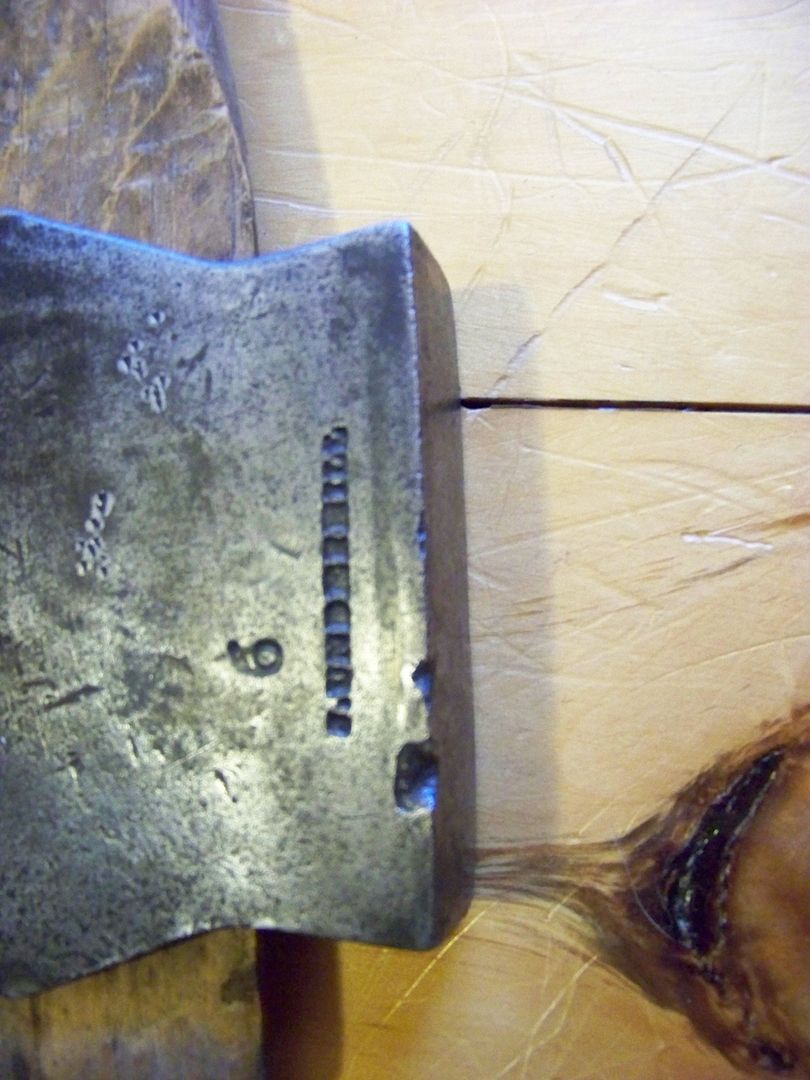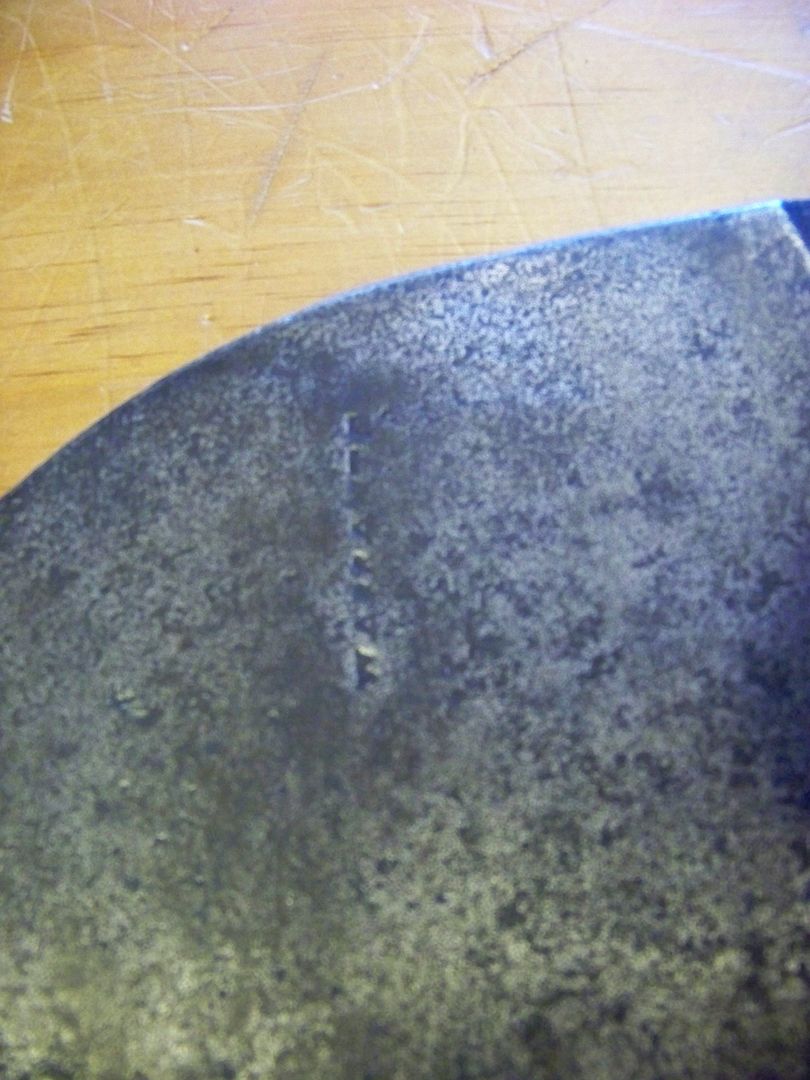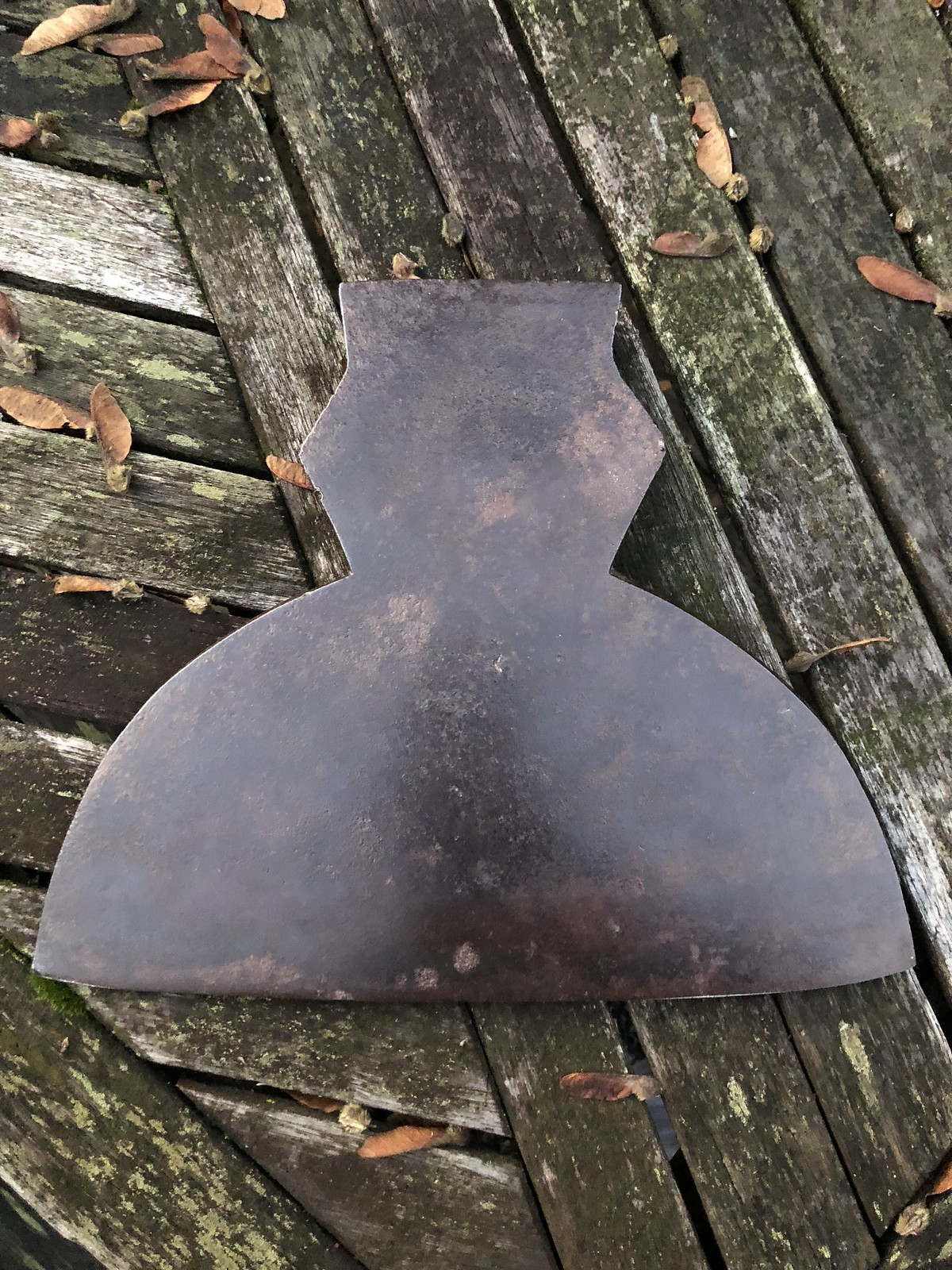Finally my silly internet connection allowed me to see these photos...Cool thread,thank you all,Steve's historic research is great as usual ,careful and thorough...
If it were that old the body would be made of wrought iron.
would likely have an iron frame with a steel bit welded into it
This axe is most definitely a composite,a softer body with the steel edge and cap of poll welded on.You can see that on the 4th photo,on the close-up of poll.(3rd photo,of the back(unbeveled)side one may or may not discern the weld...it should be visible in person.Steel is always(almost

darker;and it looks like it's fairly close to the edge. g. the tool is worn some).
So the body of that axe was forged of a malleable,lower-C iron,that in itself wasn't heat-treatable as an edge material.Then it had a higher Carbon edge and poll-plate forge-welded on,that is for certain.
But that's all we can say.I'm afraid that the nature of either of these alloys cannot be further specified,Nor,any dating done on this basis.
Edges from higher-C containing steel were laminated onto tools well into 20th century(unto today,really if you consider carbide-tipped products and all bi-metal blades currently).
Also,Wrought Iron is a slippery term to use,as it meant a number of slightly different things in different historic periods,often non-metallurgically specific;but yet sometimes very specific,like "Single(double,triple,et c. unto 5-times)-Refined Wrought iron",a very perticular Architectural grade...But there were many different kinds of iron used in tool building,and their designation was also diverse...Swedish iron,et c.
But in a Very general sense,Square_peg is very right in that it was very different from Bessemer steel by being non-homogeneous.But for dating,again,it does very little if anything.
Wrought iron was produced in the U.S. until 1969,when the last production ceased.
 ,
, ,
, ,
, ,
, ,
, ,
,
 ,
, ,
, ,
, ,
, ,
, ,
,

 D.Simmons&Co
D.Simmons&Co D.Simmons&Co
D.Simmons&Co D.Simmons&Co
D.Simmons&Co